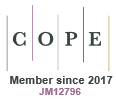Editors’ page
Sara Maroske A * and Ian D. Rae B *A Royal Botanic Gardens Melbourne, Birdwood Ave, South Yarra, Vic. 3141, Australia.
B University of Melbourne, Parkville, Vic. 3010, Australia.
Historical Records of Australian Science 33(2) iii-iii https://doi.org/10.1071/HR22011
Published: 29 July 2022
© 2022 The Author(s) (or their employer(s)). Published by CSIRO Publishing on behalf of the Australian Academy of Science. This is an open access article distributed under the Creative Commons Attribution-NonCommercial-NoDerivatives 4.0 International License (CC BY-NC-ND)
This issue contains five historical articles, three biographical memoirs, and reviews of seven books about Australian science. In each of these categories, we see the breadth that characterises Australian science and that we are so pleased to present.
Russell McGregor has taken a long look at one of the icons of Australian birding, J. A. Leach’s 1911 Australian Bird Book that helped to guide birding practice away from collection of specimens and towards field observation. He places the book at the interface of science and recreation so we can think of it as an early example of ‘citizen science’. Later in this issue, that theme is taken up in a review of the new edition of Penny Olsen’s Feathered Brush, in which we learn about the illustrators and artists whose work was important in later books of this kind. Libby Robin’s article began as the annual lecture at the University of Melbourne that is dedicated to the memory of Diana ‘Ding’ Dyason, and it was adapted for publication in HRAS. In her presentation, she traced the emergence of studies in history and philosophy of science in Australia, and the importance of soils to an emerging environment movement with an eye to food production. There is also an ‘environment’ aspect to Nicola Williams’ story of a delicate analytical balance that was twice taken to the Antarctic, where science accompanied exploration, although in the archive of ‘heroic’ stories about the Arctic and Antarctic, science is seldom mentioned. Turning to the laboratory rather than the field, one of us has taken off his editorial hat to write about some nineteenth-century chemistry that was perhaps ahead of its time and ultimately unsuccessful, but the story reveals much about scientists in the colonies, like David Orme Masson, as they tried to fit into the international scene. Ilse Rosenthal-Schneider, who had studied with Albert Einstein, Max Planck and Max von Laue, brought a particularly European blend of scholarship to Australia. Her little-known career in Australia as a university teacher and a communicator of the connections between physics and philosophy has been revealed by Daniela Helbig and Maureen O’Malley.
We publish biographical memoirs of deceased fellows of the Australian Academy of Science, as the Royal Society of London does for its fellows: when a scientist has been a fellow of both societies, the biographical memoir is published by each society using its own format. Such is the case for Geoffrey Burnstock FRS and FAA, the physiologist who discovered that adenosine triphosphate (ATP) was a not just a carrier of phosphate in biological systems but also a signalling molecule—a neurotransmitter. Ross Day was foundation professor of psychology at Monash University and the first psychologist to be elected to fellowship of the Australian Academy of Science for his work on perception that made him a world leader in this field of science. Finally, the academy has a substantial backlog of biographical memoirs being prepared, however slowly, for publication, and we are pleased to publish one for Hans Freeman, a chemist from the University of Sydney, who died in 2008. The elucidation of the crystal structures of bio-significant molecules such as the blue protein plastocyanin, required painstaking laboratory chemistry, the development of instrumentation and computing power, and the efforts of a team led by Freeman.
Something unusual among the book reviews in this issue is the coverage of technology, specifically photography and image projection by the ‘magic lantern’. This was the subject of a research project ‘Heritage and Limelight’ that gave rise to one of these books and adopted the neologism ‘lanternists’.


